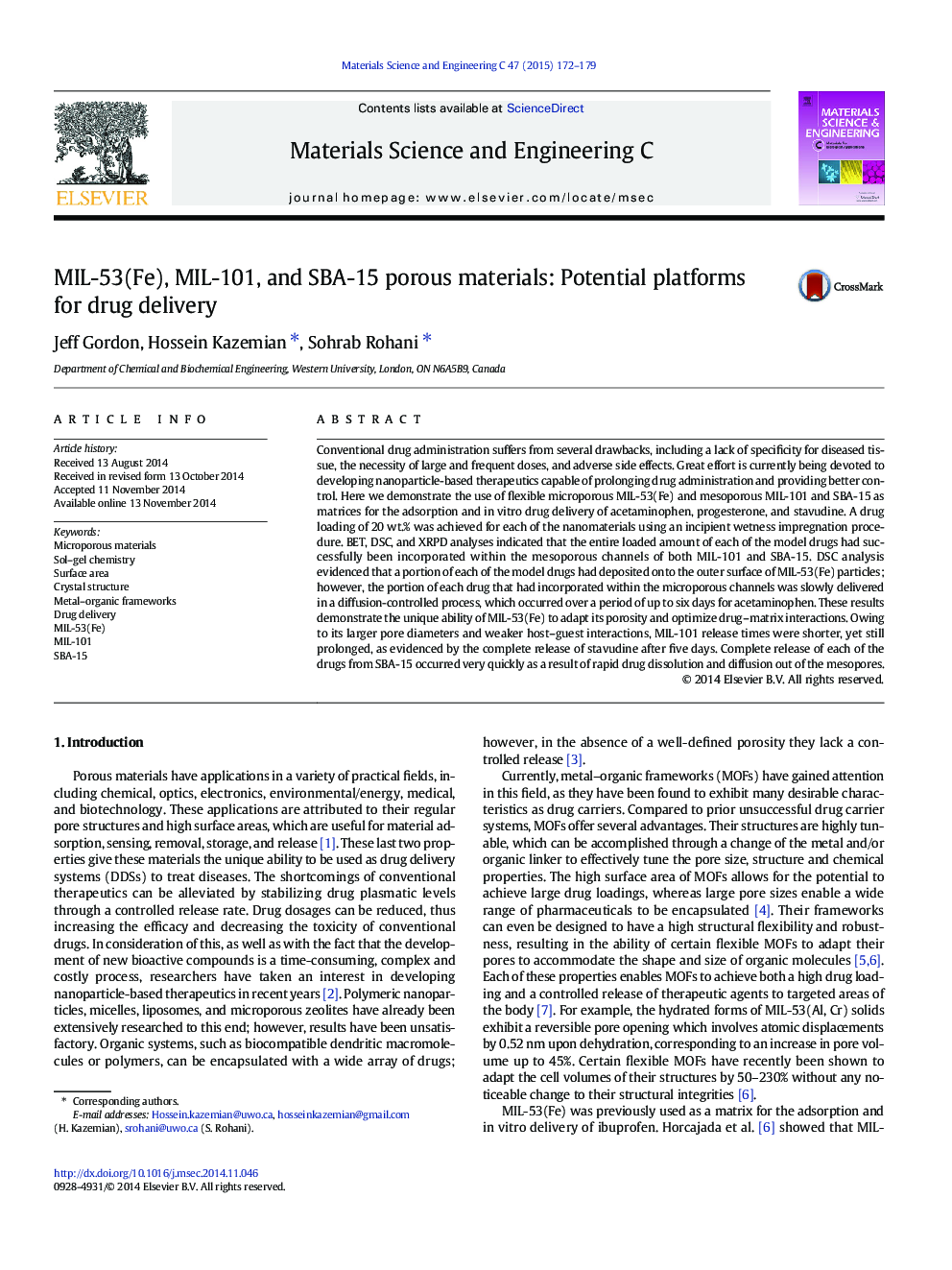| کد مقاله | کد نشریه | سال انتشار | مقاله انگلیسی | نسخه تمام متن |
|---|---|---|---|---|
| 1428390 | 1509174 | 2015 | 8 صفحه PDF | دانلود رایگان |

• MIL-53(Fe), MIL-101 and SBA-15 used for in vitro drug delivery
• 20 wt.% drug loading achieved for each of the nanomaterials by impregnation
• Acetaminophen, progesterone, and stavudine used as model drugs
• Stavudine release time was prolonged up to five days.
Conventional drug administration suffers from several drawbacks, including a lack of specificity for diseased tissue, the necessity of large and frequent doses, and adverse side effects. Great effort is currently being devoted to developing nanoparticle-based therapeutics capable of prolonging drug administration and providing better control. Here we demonstrate the use of flexible microporous MIL-53(Fe) and mesoporous MIL-101 and SBA-15 as matrices for the adsorption and in vitro drug delivery of acetaminophen, progesterone, and stavudine. A drug loading of 20 wt.% was achieved for each of the nanomaterials using an incipient wetness impregnation procedure. BET, DSC, and XRPD analyses indicated that the entire loaded amount of each of the model drugs had successfully been incorporated within the mesoporous channels of both MIL-101 and SBA-15. DSC analysis evidenced that a portion of each of the model drugs had deposited onto the outer surface of MIL-53(Fe) particles; however, the portion of each drug that had incorporated within the microporous channels was slowly delivered in a diffusion-controlled process, which occurred over a period of up to six days for acetaminophen. These results demonstrate the unique ability of MIL-53(Fe) to adapt its porosity and optimize drug–matrix interactions. Owing to its larger pore diameters and weaker host–guest interactions, MIL-101 release times were shorter, yet still prolonged, as evidenced by the complete release of stavudine after five days. Complete release of each of the drugs from SBA-15 occurred very quickly as a result of rapid drug dissolution and diffusion out of the mesopores.
Figure optionsDownload as PowerPoint slide
Journal: Materials Science and Engineering: C - Volume 47, 1 February 2015, Pages 172–179